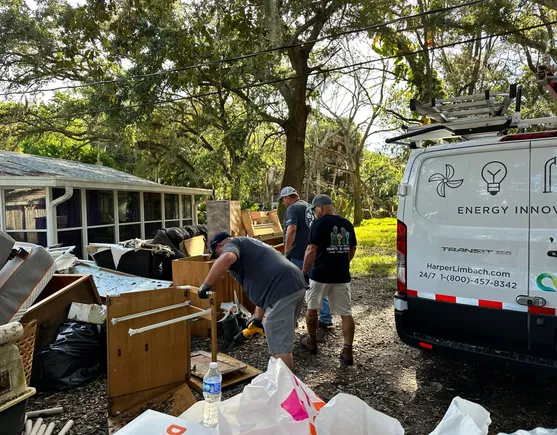Since Tractor Supply upended its longstanding diversity, equity and inclusion practices in June, more retailers, brands and other firms — including Lowe’s, Harley Davidson, Ford Motor Co., Indian Motorcycle, Molson Coors and Jack Daniels owner Brown-Forman — have similarly abandoned theirs.
These moves are reflective of an increasingly tenuous environment for any company or human resources department aiming to assemble a dynamic workforce and leadership team, according to panelists who spoke at the Society for Human Resource Management annual conference. As a result, many companies are scrutinizing their DEI policies.
And most are sticking with them.
A December 2023 survey by the Conference Board of nearly 200 chief human resources officers found “unanimous support for maintaining, if not intensifying, DEI efforts into 2024, with 63% actively seeking to further diversify their workforce.” Some companies are ducking the current spotlight on DEI by renaming their initiatives while keeping their substance intact, several experts said. Those that take this route should evaluate changes to be sure they align with business strategies and the interests of stakeholders, according to a recent report from the think tank on “repositioning DEI.”
Because companies have diverse stakeholders, including employees, customers and shareholders, and because it’s their business to be profitable, it’s not just acceptable but necessary for them to question their DEI programs’ effectiveness and evolve them as necessary, according to Diana Scott, who leads the nonprofit’s U.S. Human Capital Center.
In all, though, some 90% of those working with the Conference Board remain committed to DEI after doing so, Scott said by video call.
“Most organizations are trying to stay the course because they want to create an inclusive, diverse, vibrant culture in the organization,” Scott said. “Because they know that contributes to employee engagement, which contributes to employee productivity, which contributes to bottom-line business results. You don’t do DEI because you’re trying to be ‘woke.’ You do DEI because it’s actually serving your business.”
The fallout
While social media provocateur Robby Starbuck has been taking credit for most of the recent high-profile cases of what he calls “woke” companies scaling back or ending their DEI programs, the companies themselves are not stating that. Tractor Supply declined to comment for this story, and the other brands didn’t return multiple requests for comment. All were asked if Starbuck was behind their policy change.
Companies including Tractor Supply and Lowe’s haven’t confirmed that pressure campaigns from activist Robby Starbuck were behind their decisions to end their DEI programs.
This reluctance likely stems from Starbuck’s position as a political agitator with maximal views, whose frothy approach doesn’t comport with sober business decisions, experts said.
“This is an extreme activist who’s actually profiting from his activism,” Valeria Piaggio, global head of DEI at Kantar, said by phone. “Most are not abandoning DEI. What we do know is that some companies are adjusting the language. Or if they have a program supporting young professionals in their company, instead of stating that this is benefiting a specific group, they are expanding it.”
The anti-DEI movement has been building in the last year or two, with this year’s presidential election and last year’s Supreme Court decision, which barred affirmative action at universities, adding to the uncertainty around and attention to DEI, according to Piaggio.
The Court’s ruling has inspired litigation against private companies, though not all have been successful. Earlier this year, a federal judge in Ohio dismissed a lawsuit against Hello Alice, a fintech platform focused on “equitable access to capital and support for underrepresented entrepreneurs.” The suit had been brought by America First Legal, an organization led by Trump adviser Stephen Miller that targets “woke corporations” and DEI, among other issues.
“You don’t do DEI because you’re trying to be ‘woke.’ You do DEI because it’s actually serving your business.”

Diana Scott
Center Leader of the US Human Capital Center at The Conference Board
In general, the anti-DEI outcry has been a blunt instrument that fails to take into account what well-executed programs do for organizations, according to Effenus Henderson, a human resources consultant who is also co-director of the Institute for Sustainable Diversity and Inclusion. He served as convener for the International Organization for Standardizations’ working group that developed the global diversity and inclusion standard that the ISO adopted three years ago.
“There is quite a bit of pushback by what I characterize as a small group of far-right extremists who are trying to completely obliterate, destroy and dismantle DEI efforts, both in terms of public policy and in terms of practices in private industries,” he said by video call. “It’s very short-sighted, and a lot of folks use the word ‘DEI’ without fully understanding it.”
The Conference Board also blames hastily implemented efforts for undermining the reputation of DEI. Many businesses belatedly embraced diversity following the 2020 murder of George Floyd by police, which sent brands scrambling to prove they were doing more than professing support via social posts and marketing. But the benefits of DEI don’t accrue to businesses whose policies are limited to largely performative initiatives like sensitivity training, book clubs or celebrations of heritage months, experts said. Bias training in particular has proven to be largely ineffective despite billions spent on it in the past few decades, according to the Conference Board.
“For diversity work to be sustainable, those that get this right generally look at it as a lens in which they evaluate all of their business practices and strategies, ensuring that it’s coupled with or aligned with their shared values as an organization,” Henderson said. “So it isn’t some set-aside program. It’s more of an integral part of how one does business.”
Moreover, the word “diversity” encompasses much more than the racial, ethnic, sexual orientation or gender-based issues that bother the likes of Starbuck, he said, citing work by Marilyn Loden in the 1990s defining diversity in a wide variety of ways. Those better known attributes as well as others like educational background, geography and formative experiences, including military records, all help bring valuable perspectives to a team, DEI experts say.
“It’s not just about race and ethnicity. It also has to do with women and people with disabilities, with all sorts of diversity,” Piaggio said. “And people who are looking for the end of DEI don’t realize that they are sometimes advocating against themselves.”
DEI why
Corporate America first embraced DEI initiatives in the 1960s, according to the Conference Board. Any company that has incorporated DEI in a meaningful way is unlikely to toss it aside, for a variety of reasons, experts said.
Some aspects of these programs are necessary simply because they help ensure compliance with antidiscrimination laws, Henderson noted. Landmark diversity-focused legislation includes the 1963 Equal Pay Act, prohibiting sex-based wage discrimination, and the follow-up law signed by President Barack Obama known as the Lilly Ledbetter Act; the 1964 Civil Rights Act, which according to the U.S. Department of Labor “prohibits discrimination on the basis of race, color, religion, sex or national origin” in hiring and promoting; the 1967 Age Discrimination in Employment Act; the 1978 Pregnancy Discrimination Act; the 1990 Americans with Disabilities Act; and the 2008 Genetic Information Nondiscrimination Act, which bars federal agencies from using employees’ or job applicants’ genetic information in hiring decisions.
But effective DEI measures go beyond adherence to such laws by helping to “create a workforce that reflects the customers, the communities and so forth that we operate within,” Henderson said. In that sense, DEI isn’t relegated to the human resources department. Rather, it means systems are in place that foster effective decision-making across an organization, from product design and supply chain, to operations and marketing, and to leadership and governance, according to Henderson. The process must also be flexible because demographics change, and this takes testing and market research, he said.
“Who’s at the table, and how do you invite those different points of view, to get feedback and help to solve problems?” he said.
“People who are looking for the end of DEI don’t realize that they are sometimes advocating against themselves.”

Valeria Piaggio
Global Head of Diversity, Equity, and Inclusion, Kantar
Teams with a variety of perspectives are more likely to be innovative and make sound decisions, according to Jo-Ellen Pozner, professor of management at Santa Clara University’s Leavey School of Business.
“If everybody inside an organization looks the same — shares the same political values, and represents the same racial, ethnic, gender, and age profile — it is going to make decisions that reflect that narrow perspective,” she said by email. “When the internal team is too similar, it tends to assume that all other stakeholders are also similar and therefore share a similar perspective and values system. Once an organization includes people with different perspectives, lived experiences, political values, and demographics, it is much better positioned to take the perspective of different external stakeholder groups into consideration in decision-making.”
Important to retailers and brands is that consumers value diversity programs, with 65% in the U.S. and 71% globally agreeing with the notion that “a diversity of cultures and ideas is necessary for my country to progress,” according to a brand inclusion index released by Kantar this year. Nearly 80% of Americans also say that diversity and inclusion are important to them.
While a rallying cry of anti-DEI boycotts has been “go woke, go broke,” the reality works in the opposite direction, according to ongoing research by McKinsey & Company from the past several years. Companies in the quartile with the most diverse executive teams in terms of gender and ethnicity are, on average, 9% more likely to perform better financially than rivals, for example. Those with the most gender and ethnically diverse boards are 27% and 13%, respectively, more likely to outperform, according to McKinsey’s latest in a series of reports on DEI, released last year. Those at the bottom of executive team diversity are 66% less likely to outperform financially, even worse than the 27% of four years ago, “indicating that lack of diversity may be getting more expensive,” McKinsey said.
“Once an organization includes people with different perspectives, lived experiences, political values, and demographics, it is much better positioned to take the perspective of different external stakeholder groups into consideration in decision-making.”

Jo-Ellen Pozner
Professor of management, Santa Clara University’s Leavey School of Business
That may be why even now some level of diversity is found on the boards of directors of John Deere, Harley Davidson and even Brown-Forman, whose leadership is still populated by the founding family. At Lowe’s, less than half of the 13 board members and just a third of its nine top executives are white men. At Tractor Supply — which according to Henderson had been making good progress with its DEI practices before it folded them up — less than half of the nine board members are white men, though its leadership ranks are less diverse. In a 2023 press release in which the company boasted of its recognition “for Diversity and Inclusion in the Workplace,” the retailer noted that its workforce is “49 percent female and its Board of Directors is 40 percent female.”
Indeed, while Starbuck has been gleeful whenever a DEI program gets canceled, those companies may still have ongoing DEI initiatives of some type, or may not be so willing to undo progress they have already made. In its June announcement, for example, Tractor Supply said it works “hard to live up to our Mission and Values every day and represent the values of the communities and customers we serve.”
This will be difficult to achieve now that Tractor Supply has let its DEI team go, experts said. Moreover, its decision to abandon DEI wasn’t well thought out, experts have said, and incited a counter-backlash from Black farmers and other upset customers.
That can hurt a company both internally and externally.
The costs of abandoning DEI
Most companies are holding fast to DEI because of its advantages, while the companies ditching DEI have a lot to lose, especially if their programs had been well designed and executed.
Those hanging on have often made it clear to their stakeholders that the point of DEI efforts is fairness across the board, according to the Conference Board’s Scott, who singled out Walmart as being particularly effective in that regard.
“A lot of the divisiveness comes out of one group feeling like they’re at a disadvantage because another group is being advantaged. I do think some organizations are better at sending the message that this isn’t a zero sum game — it’s not that if one group wins the other loses,” she said. “It really is an ‘all boats rise’ situation. So a focus on creating a more diverse and equitable and inclusive company is for everyone.”
While DEI is getting a lot of attention now, companies have embraced it for decades. Bias has been recognized as counterproductive to business interests for decades, for example, according to research from the Conference Board and the University of California-San Francisco that was funded by Walmart. Per that report: Bias hampers employee engagement and can gut productivity by some 20%; biased employers miss out on hiring talented people; and their bias often leads to turnover. The latter is expensive: The Conference Board cites a 2019 Gallup estimate that replacing an employee can cost one and a half to two times their annual salary.
“There is quite a bit of pushback by what I characterize as a small group of far-right extremists who are trying to completely obliterate, destroy and dismantle DEI efforts, both in terms of public policy and in terms of practices in private industries. It’s very short-sighted.”

Effenus Henderson
Co-Director, Institute for Sustainable Diversity & Inclusion
And young employees do seem prepared to leave or avoid companies without fair hiring policies. A 2022 Ernst & Young survey found that 76% of millennials said they’d leave an employer if DEI initiatives were not offered, and nearly a third said they were already planning to leave their jobs because their company didn’t meet their values. That research also found that about half of Gen Z, millennial and LGBT+ workers, along with 40% of racially and ethnically diverse workers, said their employer’s public positions on social issues affect, “a great deal” or “a lot,” whether they remain at the company.
Retailers that unwind their DEI programs risk alienating not just their workers, but also large cohorts of consumers, experts said.
Lowe’s last year launched a series of workshops to reach millennial homeowners with do-it-yourself projects, and Tractor Supply is actively working to reach a new generation of consumers as well, with CEO Hal Lawton telling analysts two years ago that its “new customers continue to skew younger,” thanks in part to “a net migration out of urban areas, largely driven by millennials.” Observers also say that the hobby farmers who are a major and growing segment of Tractor Supply’s customer base tend to be younger and more diverse.
“For many of these companies, this is where growth is coming from,” Kantar’s Piaggio said. “It is from populations that are growing in size, in buying power and cultural influence, which is critical for retailers or brands, especially in the mass consumer market. The companies making decisions today that are not in line with where growth is coming from are jeopardizing their future, when we look at the demographics of their young workforce and their young shoppers.”






Leave a Reply